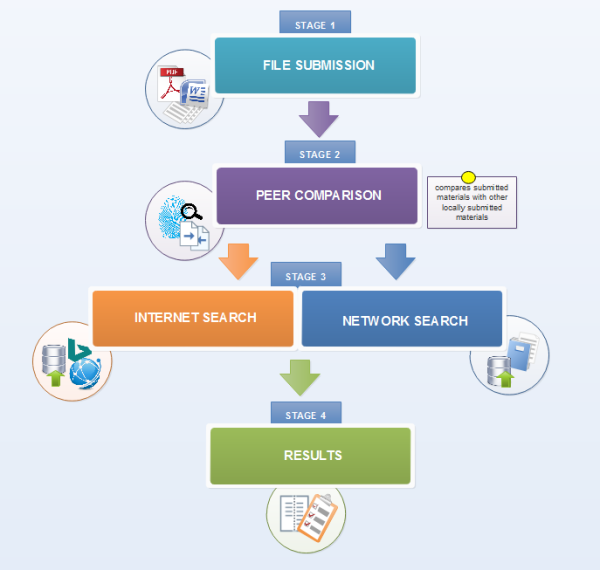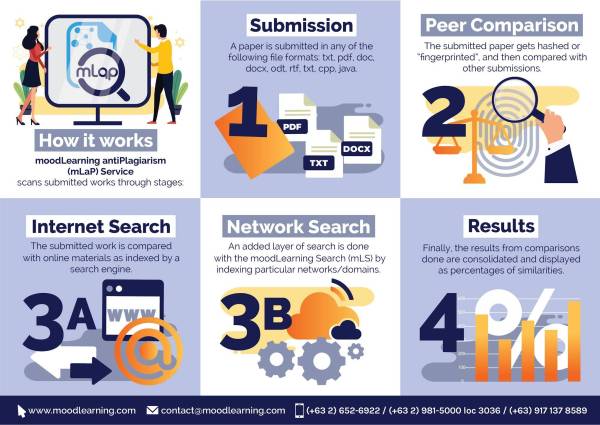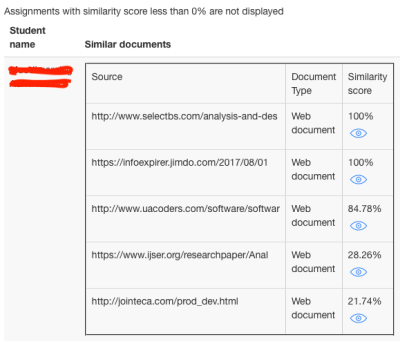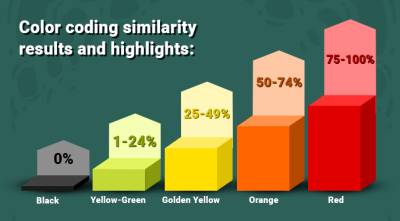How mLaP works
The moodLearning antiPlagiarism (mLaP) Service scans submitted works through stages.
Stage 1: Submission
A paper is submitted in any of the following file formats: txt, pdf, doc, docx, odt, rtf, txt, cpp, java. In Moodle, this is done via the Assignment activity of the course.
Stage 2: Peer Comparison
The submitted paper gets hashed or “fingerprinted.” The resulting “identity” is compared with other fingerprints from other submissions.
Stage 3a: Internet Search
Regardless of outcome in Stage 2, the submitted work is also compared with online materials as indexed by a search engine. For now, the reference search engine is Bing.
Stage 3b: Network Search
An added layer of search is done with the moodLearning Native Search (mLaPNS) indexing particular networks or domains. mLaPNS also enables organizations or individuals (outside of any learning management system) to upload documents that form part of the reference or database. See also use-cases-of-mlap-native-search.
Stage 4: Results
Finally, the results from comparisons done in Stages 2-4 are consolidated and displayed as percentages of similarities. Such results should enable the evaluator of materials to determine whether plagiarism has occured. Sample result here:
A percentage displayed is linked to a window showing the actual passages being similar with reference materials.
Color coding similarity results and highlights: 0% - black, 1 to 24% - yellow green, 25 to 49% - golden yellow, 50 to 74% - orange, 75 to 100% - red

In summary, papers submitted through the mLaP Services undergo fingerprinting and comparison of words with Internet pages as well as with internal documents. The results would be shown as percentages of similarities between documents.



